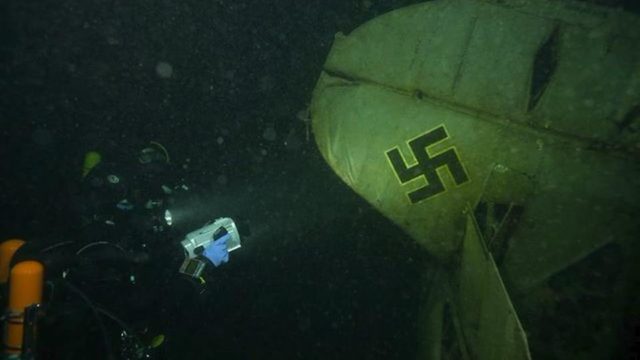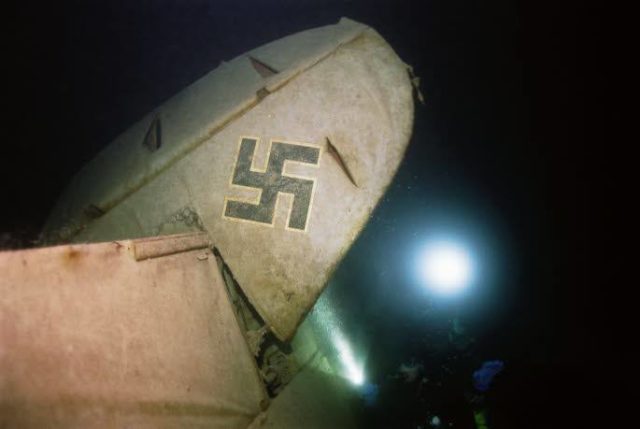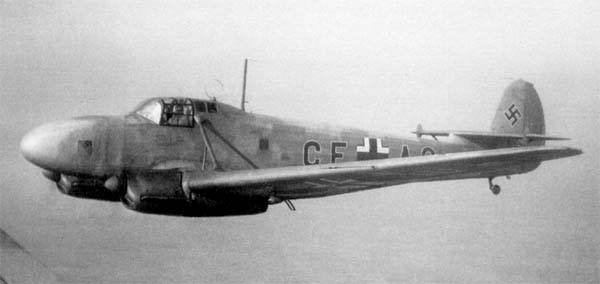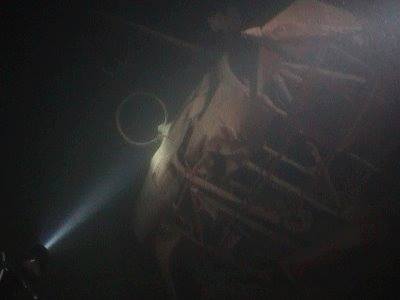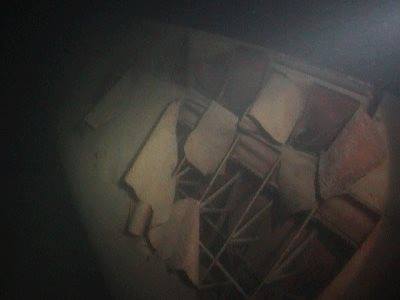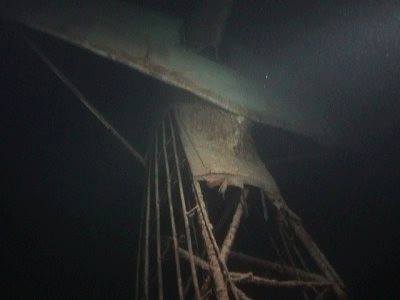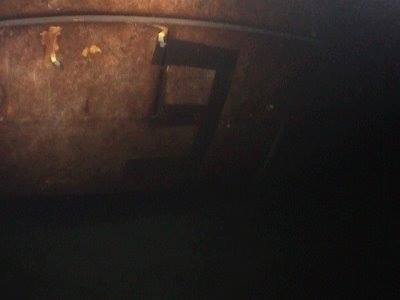A Fw 58 C crashed on 30 March 1943 in the Lac du Bourget (France) after a low-flying training pass over the lake went wrong, two of the four airmen were rescued by local fishermen. The local German command even freed four “terrorists” – local people jailed for suspected Resistance activities – as a goodwill gesture towards the local population.
Due to the dark and cold water it is fairly well preserved after 70 years, though the canvas over tube frame light structure is gradually deteriorating. All images Battlefield Relics Photography
The Focke-Wulf Fw 58 Weihe (“Harrier”) was a German aircraft, built to fill a request of the Luftwaffe for a multi-role aircraft to be used as advanced trainer for pilots, gunners and radio operators.
The Fw 58 was a low-wing monoplane with two piston engines mounted in nacelles on the wing leading edges. The crew sat in an enclosed canopy. Aft of the flight deck, the fuselage was open to form a moveable machine gun station. The tailwheel undercarriage was retractable.
Operational history
The Fw 58 was widely used for training Luftwaffe personnel. It was also used as VIP transport, ambulance, feeder airliner, photo reconnaissance, and weather research aircraft. It was built under license in Bulgaria, Hungary and Brazil. It was also operated by several countries such as the Netherlands, Romania, Croatia and Turkey.
The only Fw 58 on display is at Museu Aeroespacial in Rio de Janeiro, Brazil. Brazil used this airplane mainly for maritime patrols and the example on display was one of the 25 Fw 58B-2 units license-built in Brazil by Fábrica de Galeão circa 1941.
A Fw 58 C-2 is currently under restoration at the Norwegian Aviation Museum in Bodø.
This Fw 58 C wreck is currently accessible to advanced divers with “tech diving” equipment as it lies at a depth of over 110 meters. Video footage of the wreck was shown on various European TV channels. Due to the dark and cold water it is fairly well preserved after 70 years, though the canvas over tube frame light structure is gradually deteriorating.
Plans have been made for raising the wreck but local divers are strongly against it because of the ethical aspects (it is a war grave) and the risks of badly damaging the wreck with inadequate rising techniques (cutting the aircraft in parts with ROV’s before raising it).
